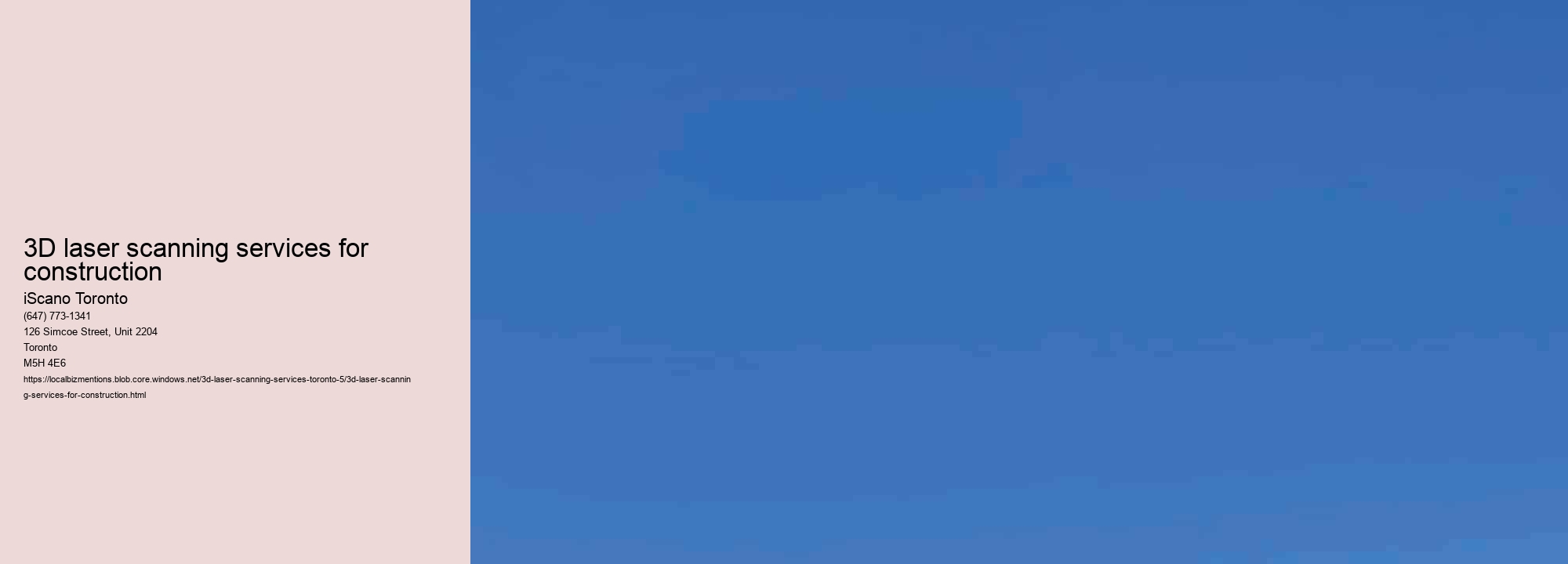Navigating the Future: Exactly How 3D Laser Scanning Services Are Transforming Industries
3D laser scanning services for construction .Intro
In the realm of technological development, few developments have been as transformative as 3D laser scanning services. These advanced devices have revolutionized industries by offering unequaled accuracy, performance, and convenience. From style to archaeology, from making to medicine, the applications of 3D laser scanning are huge and consistently broadening. In this article, we look into the complexities of this technology and discover exactly how it is reshaping the landscape of different industries.
Understanding 3D Laser Scanning
At its core, 3D laser scanning is a non-contact, non-destructive modern technology that captures the shape, dimension, and information of things or atmospheres by releasing laser light beams. These beam of lights bounce off the surfaces they run into, and the scanner measures the moment it considers each light beam to return, consequently developing a factor cloud—-- a collection of numerous data points that stand for the object'' s geometry in three measurements.
The Benefits of 3D Laser Scanning
Among the main benefits of 3D laser scanning is its unrivaled accuracy. Standard approaches of dimension often fall brief in capturing complicated geometries or complex information, causing mistakes and inadequacies. With 3D laser scanning, however, even one of the most intricate surfaces can be caught with accuracy down to the millimeter, ensuring that every detail is represented.
Moreover, 3D laser scanning is unbelievably effective. Unlike traditional evaluating strategies that can be time-consuming and labor-intensive, laser scanning enables fast data purchase. A single scan can record numerous information points in a matter of minutes, dramatically decreasing the moment and sources required for data collection.
One more considerable benefit of 3D laser scanning is its non-destructive nature. Unlike physical dimensions or intrusive evaluation methods, laser scanning does not call for direct call with the things being checked, preserving its honesty and reducing the risk of damage.
Applications Throughout Industries
The adaptability of 3D laser scanning has actually led to its extensive fostering throughout a myriad of industries. In style and building and construction, as an example, laser scanning is utilized for as-built paperwork, clash detection, and building info modeling (BIM). By accurately catching existing conditions, architects and designers can enhance the design process, decrease mistakes, and minimize pricey rework.
In the production field, 3D laser scanning plays a crucial duty in quality control, reverse design, and fast prototyping. By precisely recording the dimensions of parts and products, suppliers can recognize problems, enhance manufacturing procedures, and bring items to market faster.
The influence of 3D laser scanning extends past the realm of sector and right into areas such as archaeology, forensics, and healthcare. Excavators use laser scanning to produce thorough 3D designs of historical sites and artefacts, allowing for online conservation and evaluation. In forensics, laser scanning is used to record criminal activity scenes, collect evidence, and reconstruct accidents with unequaled accuracy. In healthcare, 3D laser scanning makes it possible for custom prosthetics, orthotics, and implants tailored to the one-of-a-kind composition of each person.
Future Fads and Technologies
As technology continues to breakthrough, the future of 3D laser scanning holds immense promise. One emerging trend is the combination of artificial intelligence (AI) and artificial intelligence formulas right into scanning software program, making it possible for automated function recognition, data evaluation, and modeling. This assimilation not just boosts the rate and accuracy of scanning procedures but additionally opens up brand-new possibilities for data-driven understandings and decision-making.
Additionally, innovations in equipment, such as the advancement of portable and mobile scanning devices, are making 3D laser scanning much more available and mobile than ever before. These compact and light-weight scanners equip users to capture data in remote or difficult environments, better increasing the reach of this transformative innovation.
Conclusion
In conclusion, 3D laser scanning services are reinventing markets across the globe, offering exceptional accuracy, performance, and convenience. From style to archaeology, from manufacturing to medicine, the applications of 3D laser scanning are infinite. As technology remains to progress, the future holds also higher promise, with advancements such as AI integration and portable scanning gadgets poised to further increase the capabilities of this transformative technology. In navigating the future, 3D laser scanning will most certainly remain to be at the leading edge of advancement, reshaping markets and driving progress in the years to come.
